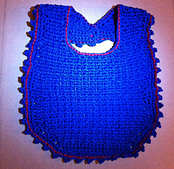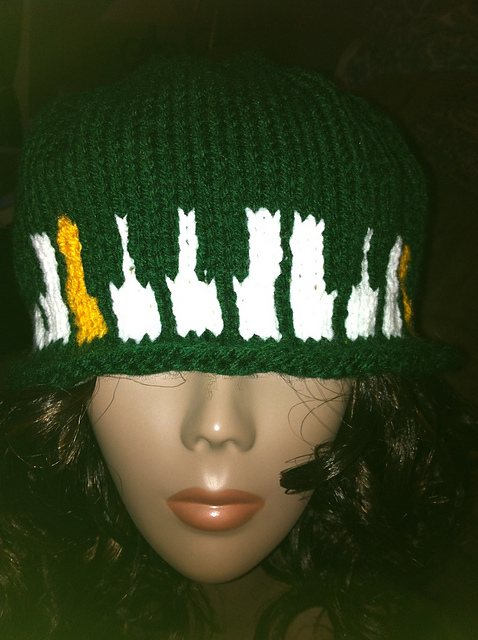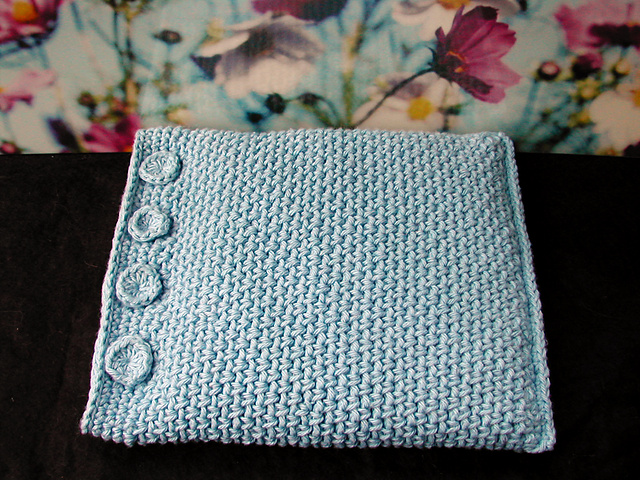During February and March, I managed to crochet more than 2200 yards. No, my wrist still hurts but not as much since I'm started wearing a splint to immobilize my wrist and thumb at night.
FEBRUARY Projects
 First out of the gate was the MacKenzie Tartan Bookmark, made from some vintage thread purchased at an estate sale several years ago. The Fan Bookmark pattern was designed by Crochetroo. Named in honor of the the primary color in the MacKenzie Tartan, this will be a gift to someone in a Ravelry swap I'm in. Made from Collingbourne's Luxura, Size 20 crochet thread, (marketed as artificial silk thread), this actual spool was manufactured sometime between the mid-1920s to as late as 1943. After a slow start, this bookmark worked up fast. I will definitely make a few more. Yardage = 25 yards
First out of the gate was the MacKenzie Tartan Bookmark, made from some vintage thread purchased at an estate sale several years ago. The Fan Bookmark pattern was designed by Crochetroo. Named in honor of the the primary color in the MacKenzie Tartan, this will be a gift to someone in a Ravelry swap I'm in. Made from Collingbourne's Luxura, Size 20 crochet thread, (marketed as artificial silk thread), this actual spool was manufactured sometime between the mid-1920s to as late as 1943. After a slow start, this bookmark worked up fast. I will definitely make a few more. Yardage = 25 yardsDuring February I took a stab at knitting. I even went so far as to attempt stranded color knitting. I made two different versions of Lindsay Koehler's Piano Hat. The first hat was completely knitted (with crocheted ear flaps added as an afterthought), while the other was crocheted with the keyboard knitted added before the crocheted ear flaps. These ear flap hats were crafted for DN #1 and her buddy, both cheerleaders at their local junior college. They wanted hats in their school colors (green, white, and gold) to wear while cheering during outdoor games. DN#2 calls these "Henry Hats." Long story. Total yardage = 415 yards
MARCH Projects
 I started the month off with Mondo's Scrappy Key Lime Dish Cloth. Having been tasked to craft something out of scrap yarn, I took inspiration watching Project Runway when Mondo Guerra pulled together and won! with this little dress made of different fabrics. I alternated two different balls of cotton yarn -- one was solid green and one transitioned from white to various shades of green. The texture is created using the SC-Ch stitch combination.
I started the month off with Mondo's Scrappy Key Lime Dish Cloth. Having been tasked to craft something out of scrap yarn, I took inspiration watching Project Runway when Mondo Guerra pulled together and won! with this little dress made of different fabrics. I alternated two different balls of cotton yarn -- one was solid green and one transitioned from white to various shades of green. The texture is created using the SC-Ch stitch combination.I was then tasked to find inspiration from a Gustav Klimt painting. I love images of trees, so naturally when I saw this picture, I had to craft something! And would you know it, I had three skeins of Lion Brand Homespun in the exact same colors! Thank goodness for bulky yarn because my Birch Forest Homespun Shawl went from start to finish in less than 10 hours. I used the Half Granny Square Shawl pattern by Anastacia Zittel. Despite a wingspan of more than 70 inches, the shawl weighs just over a pound. A perfect shawl for the office. Total yardage = 555 yards
Next up was a felted tote that started out as a wool watch cap for my father. My sister Constance has always said that my father has a big head so I made it a bit large. Knowing that it was going to be felted, I made it a bit bigger. However, when I finished crocheting the brim, I realized that it was waaaaay too bit, even for my "big-headed" father. So, I turned it upside down, added on the straps and button, and felted the hell out of the new tote. This will make someone a great project bag. Yarn used was Patons Classic Wool and Lion Brand/s Wool Solids. Yardage = 762 yards
 This little baby bib was a simple project to craft, using almost a skein of Ornaghi Filati Gong, a plush mercerized DK cotton yarn. Its trimmed in a single ply of red cotton pulled from a scrap of 4 ply TLC Cotton Plus. Yardage = 121 yards
This little baby bib was a simple project to craft, using almost a skein of Ornaghi Filati Gong, a plush mercerized DK cotton yarn. Its trimmed in a single ply of red cotton pulled from a scrap of 4 ply TLC Cotton Plus. Yardage = 121 yards I made this Massage Ball Sack to use as part of my physical therapy. This sack is designed to hold two tennis balls next to one another to aid in trigger-point therapy, an alternative type of massage used by physical therapists to break up the trigger points or muscle knots that are the source of pain throughout various parts of the body. The balls effectively reach either side of the spine, upper back, and other targeted areas of the upper and lower-body, as well as thigh and calf muscles. I used Lion Brand Sock-Ease in Grape Soda. Yardage = 219.
I made this Massage Ball Sack to use as part of my physical therapy. This sack is designed to hold two tennis balls next to one another to aid in trigger-point therapy, an alternative type of massage used by physical therapists to break up the trigger points or muscle knots that are the source of pain throughout various parts of the body. The balls effectively reach either side of the spine, upper back, and other targeted areas of the upper and lower-body, as well as thigh and calf muscles. I used Lion Brand Sock-Ease in Grape Soda. Yardage = 219.










